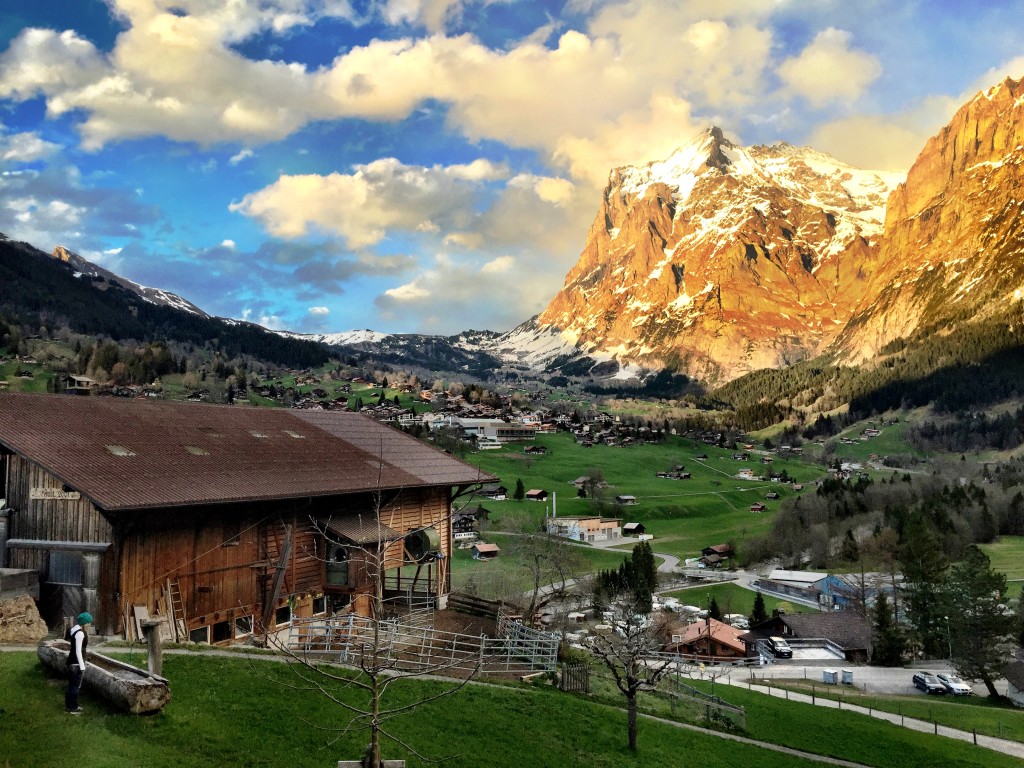Thousands of you, no, hundreds of thousands of you will travel to Europe this year. You’ll pay big money for flights. You’ll go in the summer. You’ll fly in and out of the same location. You’ll travel by train. You’ll stay in hotels. You’ll eat in restaurants.
You’ll do it all wrong.
Let’s get one thing clear – the important part is that you not let the wonders of Europe go unseen. It matters more to me that you’ll commit now to spend some time discovering idyllic villages, soaking up centuries of history, indulging in delicious foods, and reveling in rich, rich culture at some point in the very near future, even if you do choose to do it the wrong way.
Yet, my whole point in writing this is to tell you that doing it the right way is cheaper, more fun, and even more exquisite.
What is the right way? Let me break it down.
Pay points, not money, for flights
Generally, the biggest expense of travel is the airfare itself. You’re looking a somewhere in the neighborhood of $1000-$2000 per person for flights. The problem with dishing out that kind of dough is that it makes you a miser once you get there.

This is how we recently booked flights to Europe.

This is how someone else would have booked the same flight.
If you want to inject your European travel adventure with a feeling of frivolous freedom, start by getting there for free. I know that sounds easier said than done, but if you ask the thousands of followers of our blog, they’d tell you its easier done than thought.
A good base rule is that you can get flights to Europe for 45k-60k miles if you’re willing to be flexible and look a little bit, and if you’re willing to go “during the off-season” (which we’ll talk about next). That means you need 100k-120k frequent flyer miles for a couple getaway and that’s not a terribly high hurdle. I could go on and on about this, but that’s really what our blog is all about. We’ve been posting almost-free travel recipes for more than five years now and a little bit of poking around will set you on your way.
Opt for spring, fall, or winter, not summer
If you live in Phoenix, I get it. I don’t blame you for wanting to escape July and August, but if you live anywhere else, for hell sakes, spend your summers at home! If you follow the traditional approach to vacationing, you’ll wind up fighting the crowds, higher prices, and the heat everywhere you go. Sure you have a better chance at having sunny days, but you’ll spend half of them in museums, anyway.
Spring, fall, and winter all make for far better travel pictures and isn’t the reason we travel so that we can take pictures and post them to Instagram for our friends to like, anyways?
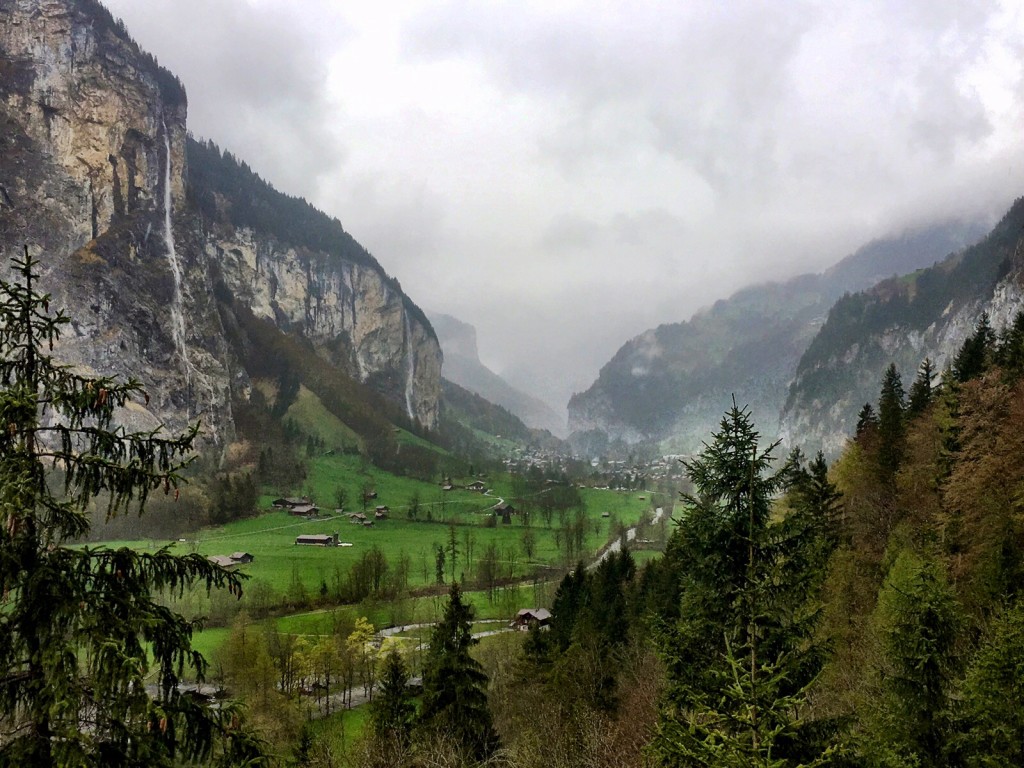
Lauterbrunnen, Switzerland – Photo credit: Marshall Griffin
This picture of spring in the Lauterbrunnen valley wouldn’t be nearly so awesome were it not for the thick blanket of clouds and fog that kept the colors sharp and added to the mystique of the 72 waterfalls which plunge off huge cliff walls on both sides. I know because I was there the day before when it was sunny and my pictures were washed out and shadowy.
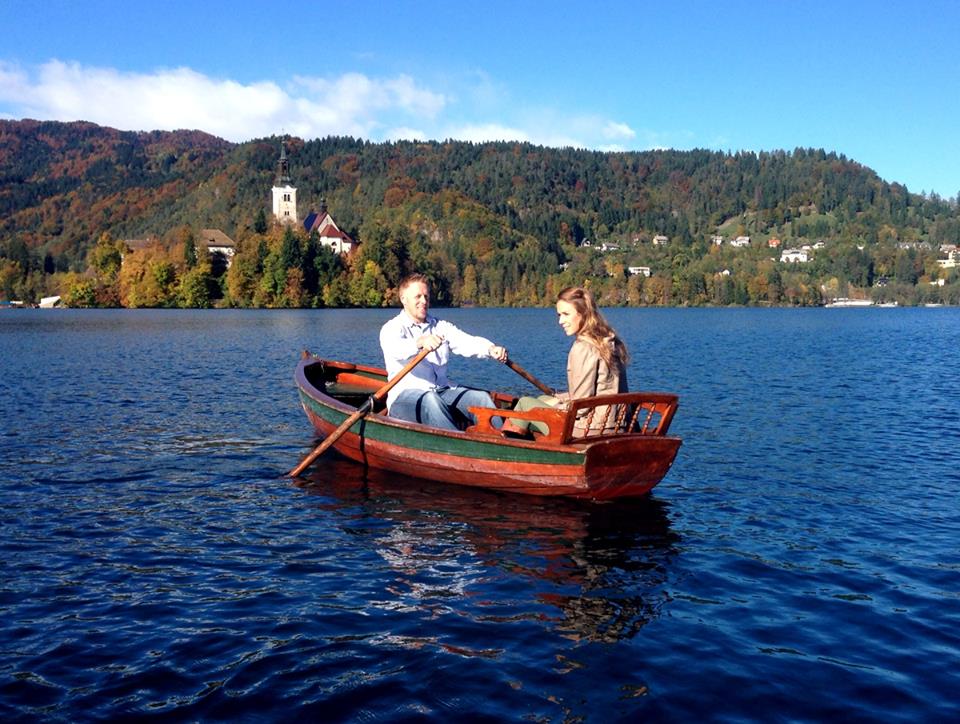
Fall morning on Lake Bled, Slovenia
Similarly, the magic of the seasons just adds to the experience. We visited Lake Bled in Slovenia and captured this moment – rowing out to the fall-colored island in the crisp morning air.
I know I’ve already made my point, but I’ll go ahead and belabor it with a winter example. Just tell me what, exactly, would be wrong with visiting Hallstatt, Austria in the winter? That’s right, not a damn thing.
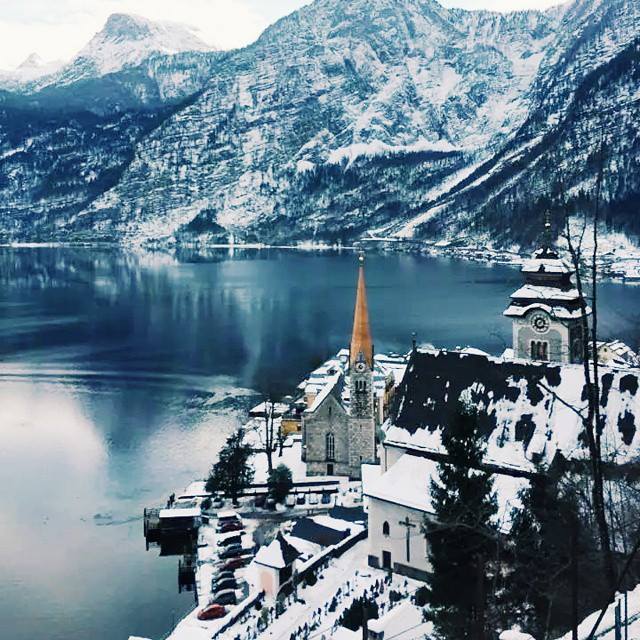
Hallstatt, Austria in the Winter – Photo Credit: Stephanie Bowen
When you opt to travel in the shoulder season, sure, you may find yourself having taken the tram to the tiny Swiss alpine hamlet of Gimmelwald (where Heidi was filmed), only to find it socked in with fog and desolate, but maybe then you’d take a rainy stroll to the next village of Murren where you sit down for the most delicious mug of hot chocolate you’ve ever had, and who wants to miss out on that?
Fly open-jaw, not in&out
For most people “open-jaw” is something you get when you look at that picture of the Lauterbrunnen valley (go ahead, scroll back up and have a look one more time), but for me, it means not backtracking and maximizing your experience/mobilization ratio.
An open-jaw flight arrangement simply means flying into one city and out of another. It’s so easy to get caught up in the mindset of round-trip flights in and out of the same city, but chances are you’re going to be spending some time in other places, so if you can avoid retracing your path, all the better.
If you do have to go in&out, at least arrange a loop itinerary, which allows you to see more and not waste the valuable vacation time that we Americans don’t get enough of anyhow.
I like to think of travel itineraries as “slashes,” cutting from one major city to another. It also helps make booking flights with points easier, as you can take advantage of the best routings to and from different airports.
Doing it this way also allows you to not exhaust your agenda in a single city. You could certainly spend an entire week or two in Paris, but if you’re like me, you’ll become city-stir-crazy. Spend 2 days at the beginning or end of a “slash” itinerary and then get out of town. You can catch the rest on the way into or out of another trip in the future. Embrace the open-jaw!
Skip the train and rent a car
Yes, Europe has very efficient rail infrastructure. It’s modern and fast, and somewhat affordable, but there’s not a train in the world that can take you to Civita Di Bagnoregio – one of the most picturesque places I’ve ever seen. If you’re on a train you can’t pass under a massive suspension bridge and decide, “hey, we should pull off and check that out.”
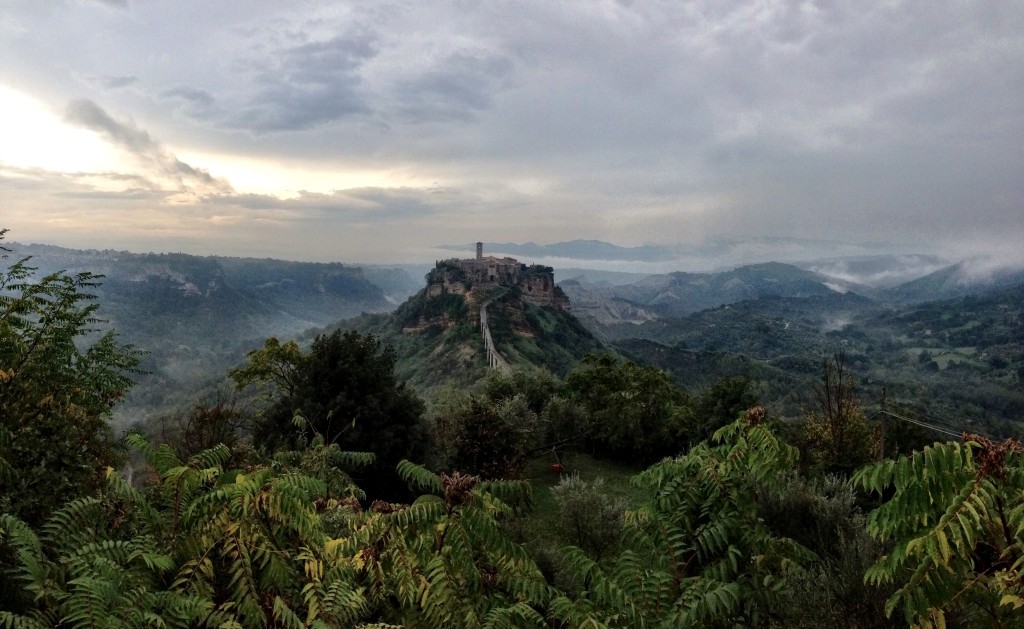
Civita Di Bagnoregio, an Etruscan hill city 1 hour north of Rome
Sure, there’s a train that will take you to all five of the Cinque Terre, but having your own vehicle in Europe allows for the kind of off-the-beaten-track adventures. Parking is kind of a challenge, but less so if you’re heeding our non-summer advice. Navigating has been made easy by turn by turn GPS. Driving itself is fun and adds to the adventure. Fuel is inexpensive (at least at the moment), especially when costs are shared. Car time is great for connecting with travel companions and scenic vistas.
Will there be some tolls? Of course, but all told (see how I did that?), it will still come out cheaper and far more convenient. Best of all, you won’t have to give yourself a one-hour scenic tour of the train station when you show up just a few minutes late for the train you’re trying to catch.
As an added bonus, there’s a 100% chance you will not be affected if or when the train personnel n a given country decide to strike – a common occurrence that has a way of really wreaking havoc on a vacation.
Stay in vacation homes, not hotels
Somewhere a hotel executive is having a hard time sleeping. She’s worrying about Airbnb.com and Homeaway.com, and for good reason.
The idea behind hotel chains is that no matter where you are, your stay experience is the same. How lame does that sound? Shun the unique – when in Ireland, pretend you’re in Houston. I can’t think of anything less attractive. Why not stay in Peter’s castle – an 800 year-old castle tower which has been painstakingly restored to kingly appointment… wait for it… for far less than you’d pay to stay at a hotel!
If you’re not staying in vacation homes, you’re robbing yourself of one of the best experiences travel has to offer – the chance to live like the locals.
On our recent travel to Europe, we stayed in a farmhouse in the shadows of the Swiss alps. In broken English, our host showed us around the perfect home. After settling in, I went to put some of our food items in the refrigerator, where I found a block of cheese – made from the milk of the cows in the neighboring barn, and cured in the cellar below the home we were staying in. Did I mention that it cost us half of what a lame 2 star motel would have cost us?
If all that weren’t enough, vacation homes also offer three other significant benefits – they allow you the convenience of cooking food at home and doing laundry. Imagine how much less you have to pack if you know you’ll have a chance to do some mid-trip laundry. Lastly, if you’re in a group, there’s nothing like stoking a fire and gathering around it to play cards, tell stories, eat snacks and enhance the experience. There’s no better way to do it, I’m here to tell you.
Eat picnics, not just at restaurants
Ok, let me clarify, unless you’re absolutely strapped or are 0% foodie and eat only to live, you must have the restaurant experiences in Europe, but also don’t deprive yourself of the magic of a picnic.
For less than $5-10, you can pick up some fresh-baked bread, local cheeses, and unique meats just about everywhere in Europe. You can do the same with pastries or fruit for breakfasts.
The best part is selecting the scenic environment for your picnic. Sure there are restaurants which offer great scenery and $24 plates of spaghetti, but there’s nothing wrong with making your own little meal and choosing a proper setting.
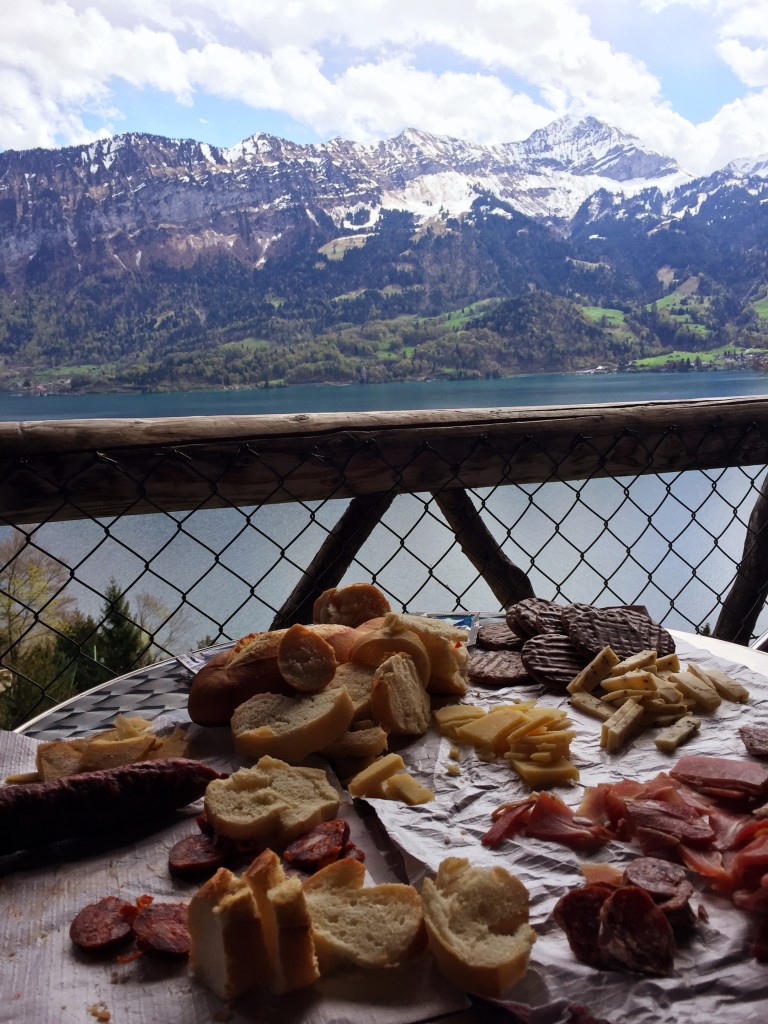
The view of Lake Thun from St Beatus Caves – a great place for a picnic
Doing something like this can allow you eat one or two meals a day like a king, and still keep your food budget below $100/day or lower.
Doing it right
Truth is, I’m secretly hoping you won’t take my advice.
I like taking pictures of vacant gilded palace halls far more than I do elbowing away the crowds, and I’d just as soon not have competition.
I’d much rather find perfectly blissful vacation homes with abundant availability than to have hoards of people bailing on hotels in exchange for more authentic lodging.
But if you do happen to listen and we see you pulled off in your Peugeot, huddled under an umbrella for a rainy April picnic in the seaside village of Ribadesella, please just do me a favor and throw me the double-W WorldWanderlusting gang sign…


